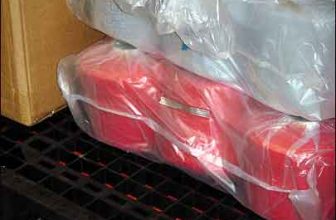
Hong Kong electroplating company JMI deploys RFID system to improve production efficiency
[ad_1]
Hong Kong electroplating company JMI deployed on two assembly linesRFIDThe system realizes the improvement of work efficiency, the reduction of error rate and the recording of product historical data.
JMI focuses on metal coatings for kitchen and bathroom products, electronic consumer products, and automotive equipment parts. Generally speaking, the electroplating process requires parts to be immersed in an electrolyte solution filled with dissolved metal salts and ions.

The electroplating parameters (current, temperature and solution concentration) of the product vary with the product size and material. The process parameters of different JMI production lines (such as: pretreatment time, post-treatment of plating parameters) are different. Before deploying the system, staff and supervisors need to pay close attention to the electroplating production line and manually record the time of each process.
Parry Chow, manager of JMI’s system management department, said that manual recording would lose many details of the production process. She explained: “In the past, we couldn’t know how many work-in-progress and how many finished products the production line had in real time.” This also made it difficult for the production line to determine the order completion status. At the same time, because the data of the ERP system needs to be manually input, it is difficult to report production and quality issues in a timely manner.
PCCW senior consultant Jacky Ting said that in order to realize the automatic recording of work-in-process data, JMI deployed PCCW’s RFID-based electroplating process management system on two production lines.
The company attaches Confidex’s micro RFID tags to the load beam above each conveyor plate (400 tags are deployed in the two production lines). This label has strong chemical resistance and durability. Since the label is deployed on the load beam rather than the product itself, the label can be recycled.
First, when items are placed on the conveyor board, the staff can use the PC and handheld computer to input the system. At the same time, the CSL CS203 fixed reader above the production line will automatically read the ID number on the load beam. Then, these data will be transmitted to the PCCW software on the server via the local area network.
Then, the conveyor plate will automatically transport and bring the product into the electrolyte tank. After the electroplating process is completed, the product is taken out of the electrolytic cell.The second one installed on the production lineReaderThe tag ID code will be read again and the data will be uploaded to the software. Before entering the warehouse, the product still has a testing process.
After using this system, the production line supervisor can understand the production line’s work-in-progress status, residence time and production process in real time. According to Parry Chow, the technology eliminates the need for manual data input, which also reduces the error rate. At the same time, the system also makes product output and quality issues more transparent.
JMI also uses the RFID system to provide product quality inspection failure data, so as to prevent the escalation of quality problems. At the same time, PCCW software also provides data analysis to allow companies to understand the reasons for product failure.
In the future, the company intends to install this system on more production lines in order to achieve automated recording of work-in-progress and improve process monitoring capabilities.
[ad_2]




